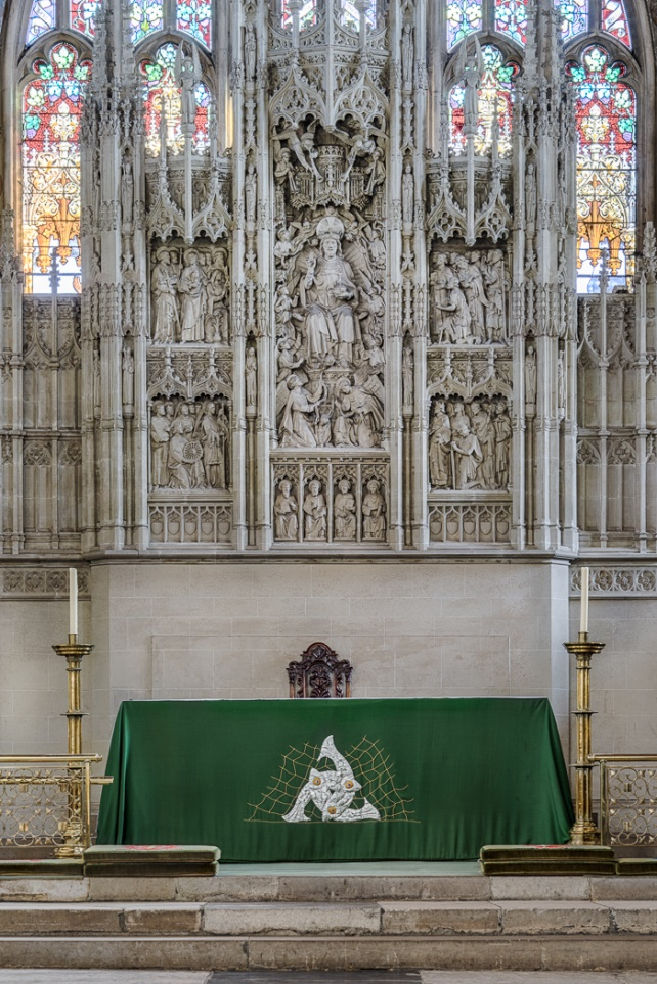
All Saints Heritage Trail
The High Altar
If we turn 180 degrees, we will look at the most holy part of the church. At its most central point is the High Altar where the Communion bread and wine is blessed. The Altar is covered with a cloth which is changed according to the seasons of the Christian year. For example, a purple covering is used during Advent and Lent while red is used at times when the work of the Holy Spirit is emphasized. The green covering shown in the picture below represents growth and is used during Ordinary Time (the season after Epiphany and the season after Pentecost).

The High Altar
The large wooden chair on the left of the Altar is the Bishop’s Throne which is used by the Bishop when visiting, perhaps for a Confirmation service. Behind the Throne stands part of an original medieval wooden screen which shows evidence of colour and pattern.
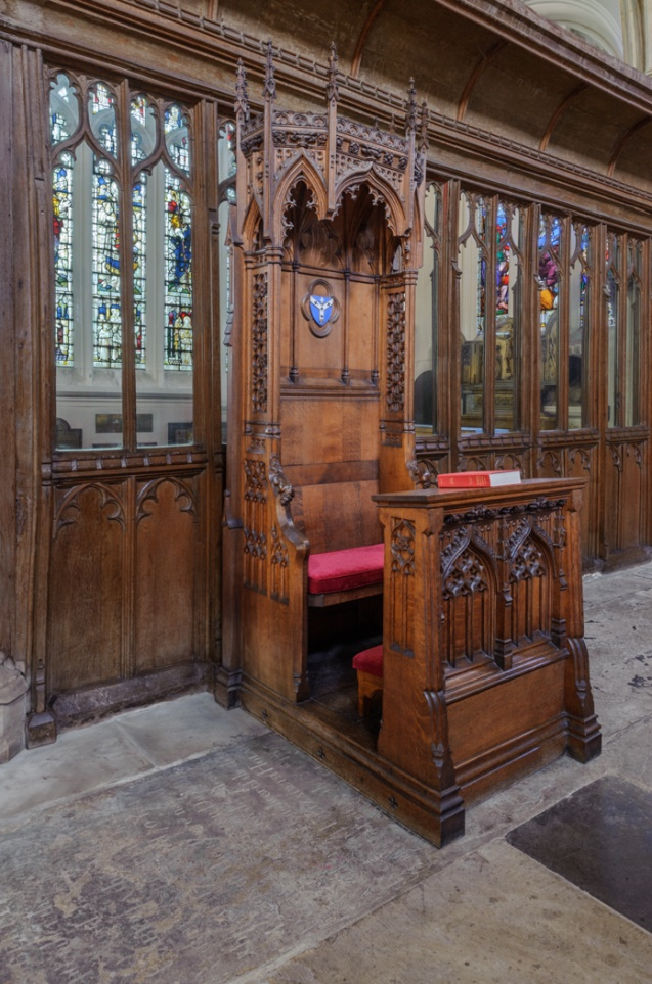
The Bishop’s Throne and Medieval screen
The Woodville Tomb
Set into the floor by this screen is a memorial to Richard de Woodville and his wife Jacquetta of Luxembourg. Richard de Woodville was born in Maidstone in 1405 and he and his wife lived at the original mansion in Mote Park when it came into the family’s possession in 1369. Richard de Woodville achieved high Offices of State and became Lord Treasurer in 1466 and High Constable of England in 1467. In the Wars of the Roses, he was initially a Lancastrian, but he became a Yorkist when he thought that the Lancastrian cause was lost. After the Yorkist defeat at the Battle of Edgecote Moor on 26 July 1469, he and his second son John were taken prisoners at Chepstow. Following a hasty show trial, they were beheaded at Kenilworth on 12 August 1469. His wife Jacquetta died three years later in 1472. This tomb was originally one of three altar-tombs but now only rather unclear indentations at floor level can be seen. Two figures laying side by side (Richard on the left and Jacquetta on the right) can just be made out but no lettering is visible.
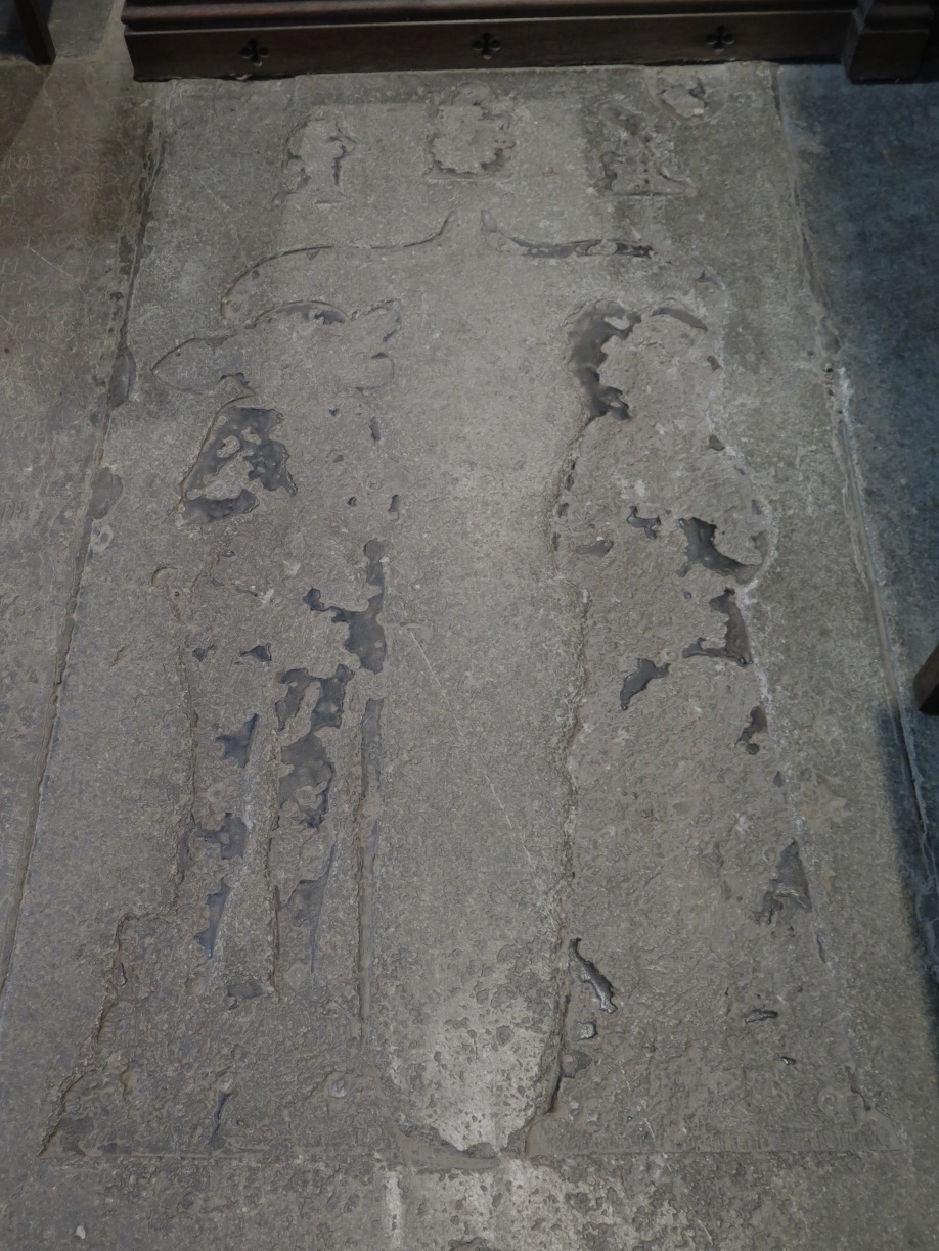
The Woodville Tomb showing two lying figures
It is interesting to note that Richard de Woodville’s eldest daughter Elizabeth became the consort of King Edward IV and was the mother of the two princes (Edward V of England and Richard of Shrewsbury, Duke of York) who were murdered in the Tower of London as well as being grandmother to Henry VIII.
The Sedilia
On the opposite side of the Sanctuary from the Throne is the Sedilia. This provides seats for those who are involved in the giving of bread and wine during a Communion Service. There are normally three such seats with one being raised and All Saints is unusual in having four seats and all at the same level: one is for the Archbishop, one for the Master of the College and the remaining two for priests. Into one of the stone seats is scratched the medieval game called OVIDS – a series of 9 dots which are joined together to form a type of medieval noughts and crosses.
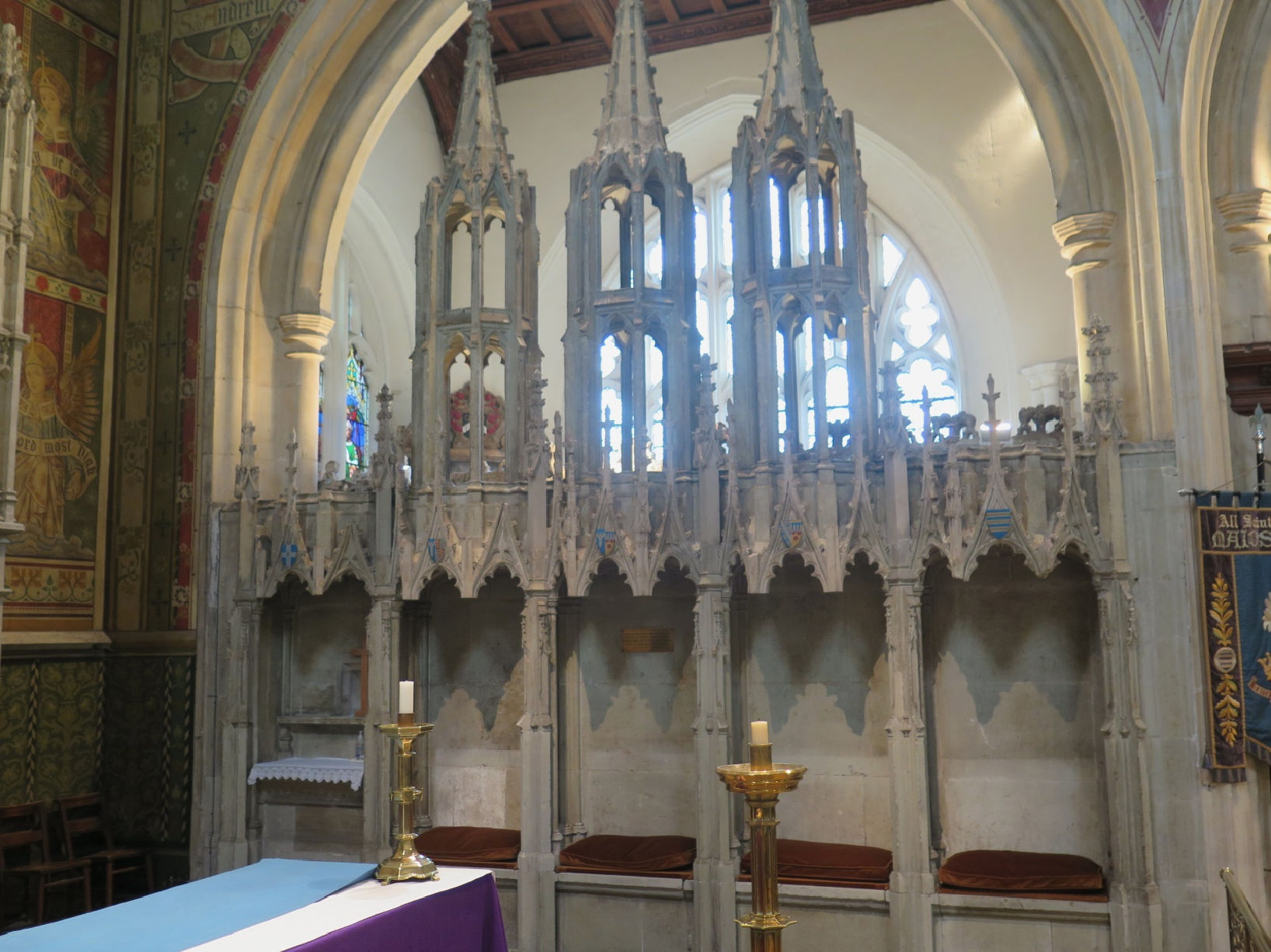
The Sedilia showing the four level seats
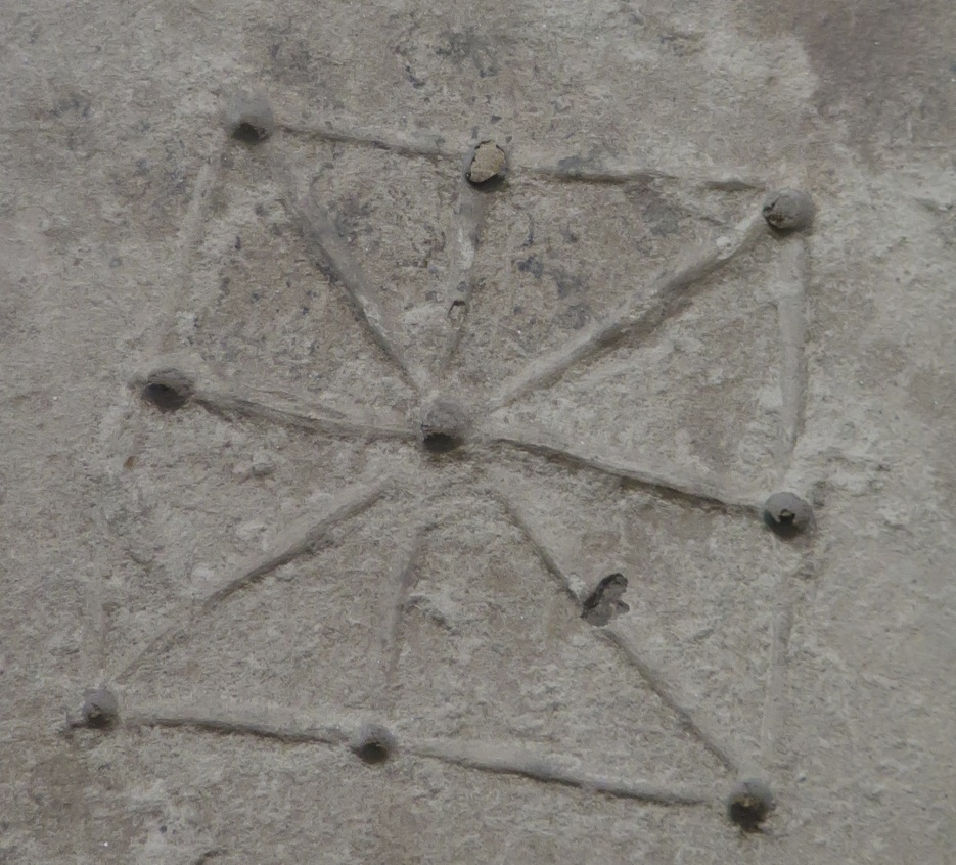
The game of OVIDS
The Reredos
The large stone monument behind the altar is known as a Reredos. It was placed here by the Monkton family and was dedicated by the Archbishop of Canterbury in 1904. It is in memory of Herbert John Monkton who died in the South African Campaign on 4 Feb 1902. The monument represents the Te Deum which is an early Christian hymn of praise. The title is taken from its opening Latin words Te Deum Laudamus which means “Thee, O God, we praise".
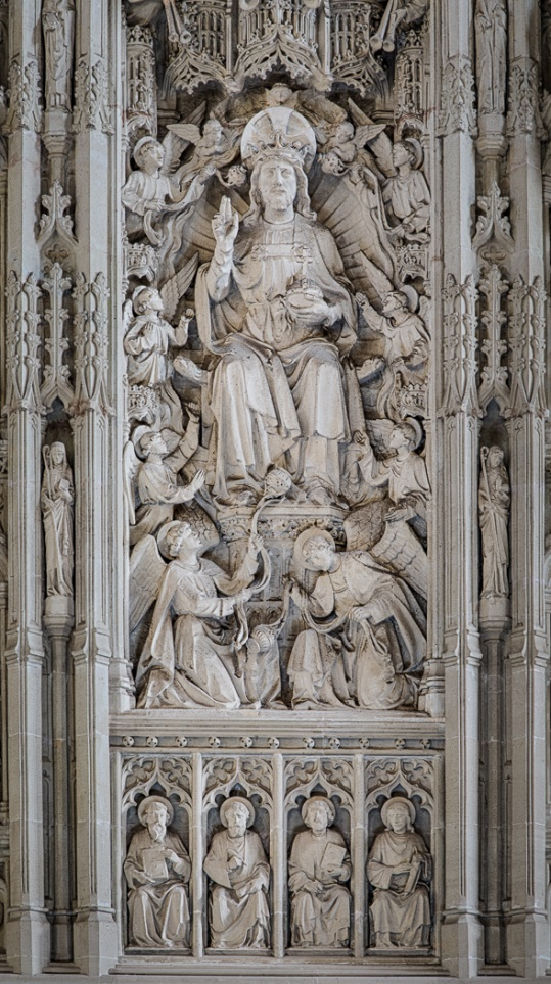
Christ in Majesty – part of the Reredos
|
|
|
Statues on the Reredos
The Ascension Window
Hidden by the Reredos is the Ascension Window made by J B Capronnier of Brussels in 1871. The window illustrates the 12 disciples looking upward as Jesus ascends from earth to heaven attended by two angels. The window was erected in memory of Alexander Randell and his 2 nephews. Following research by Susan Nystrom-Marshall, she was able to undertake a painting of the window a copy of which is reproduced below.
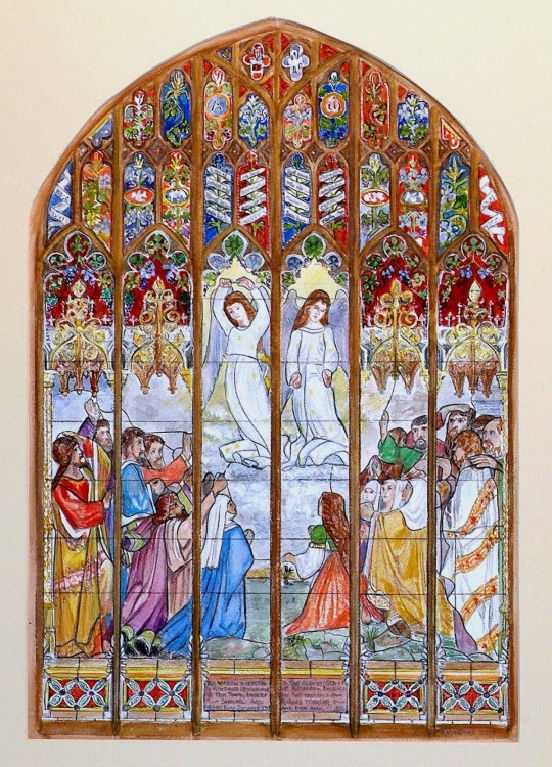
Realisation of The Ascension Window
We now move through the door to the East end of the South Aisle.
NEXT PAGE